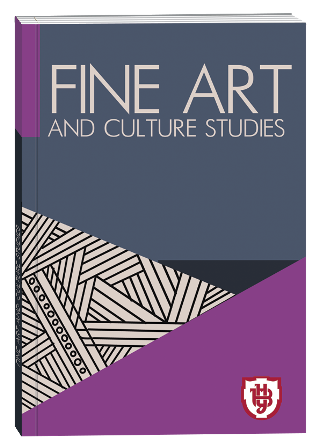ЄДНІСТЬ ПОЕТИЧНОГО І МУЗИЧНОГО НАЧАЛА У ВІДОБРАЖЕННІ ПРИРОДИ В КИТАЙСЬКІЙ КАМЕРНО-ВОКАЛЬНІЙ МУЗИЦІ ХХ СТОЛІТТЯ
DOI:
https://doi.org/10.32782/facs-2022-1-25Ключові слова:
китайська естетико-філософська традиція, камерно-вокальний жанр, творчість сучасних китайських композиторів, символіка образів природиАнотація
Китайська академічна музика – як інструментальна, так і вокальна – в останні роки отримує стрімке поширення не лише у себе на батьківщині, але й і в європейському (європоцентричному) культурному просторі. Виконавці з Піднебесної нерідко будують свої концертні програми, поєднуючи артефакти західного і східного мистецтва. Однак, для слухача, вихованого на європейській традиції, буває важко зрозуміти специфіку художнього втілення розмаїтих образів китайськими композиторами, серед яких особливе місце займають образи природи. Відтак, актуальною музикознавчою проблемою є обґрунтування засад взаємодії поетичного і музичного первнів у камерно-вокальній музиці китайських авторів. Мета статті – на основі розгляду традиційних китайських філософських та естетичних концепцій, аналізу вибраних камерно-вокальних артефактів виокремити основні характеристики взаємодії поетичної і музичної складових у солоспівах китайських композиторів. Методологія дослідження відображена у таких його завданнях: 1) аналіз основних досліджень, присвячених відображенню тематики природи в китайській камерно-вокальній музиці; 2) з’ясування сенсу символів природи в китайській пісенній творчості; 3) здійснення аналітичних студій обраних солоспівів китайських композито- рів для підтвердження авторської гіпотези; 4) узагальнення та розкриття перспектив подальших досліджень камерно-вокальної творчості. Наукова новизна. У статті представлено власну концепцію втілення образів природи в камерно-вокальній музиці китайських композиторів, розглянуто особливості взаємодії поетичної та музичної складової у відобра- женні тематики природи, провідної у національній духовно-мистецькій традиції. Висновки. Аналіз ряду солоспівів сучасних китайських композиторів підтвердив основну гіпотезу авторської концепції про те, що система їх музично-виразових засобів спрямована на розкриття прихованого смислу кожного поетичного рядка, відтак містить ряд алюзій, інспірованих символікою вірша. У музично-поетичному синтезі камерно-вокальних артефактів слід шукати виходів поза межі однозначного тлумачення, розуміти їх ігрову метафоричну природу, натяки і символи, знайомі читачам, вихованим у китайській духовній традиції.
Посилання
Iн Шаннен. Спів словами. Пекін : Вид-во народної музики, 1981. 131 с. (китайською мовою).
Рубин В. Личность и власть в древнем Китае : Собрание трудов. Москва : Восточная литература, 1999. 384 с.
Ткаченко Г. Космос, музыка, ритуал. Миф и эстетика в «Люйши Чуньцю». Москва : Наука, 1990. 283 с.
У Хунюань. Китайская художественная песня: теория и история жанра : дис. … канд. искусствоведения : 17.00.03. Харьков, 2016. 231 с.
У Ю-Цин. Дослідження давніх струнних інструментів. Шанхай : Вид-во Шанхайського музичного інституту, 2008. 329 с. (китайською мовою).
Цай Жонгді. Історія китайської музичної естетики. Пекін : Вид-во народної музики, 1995. 866 с. (китайською мовою).
Ян Інлю. Історія давньої китайської музики. Пекін : Вид-во народної музики, 1981. 1528 с. (китайською мовою).
Liu C. C. A Critical History of New Music in China / Translated by C. Mason. Hong Kong : The Chinese University of Hong Kong, 2010. 960 р.
Dawson R. S. The Chinese chameleon: an analysis of European conceptions of Chinese civilization. London, New York [etc.] : Oxford U.P., 1967. 235 р.
The Cambridge history of Chinese literature / edited by Kang-i Sun Chang and Stephen Owen. Cambridge, UK ; New York : Cambridge University Press, 2010. Vol. 1. 711 p.







